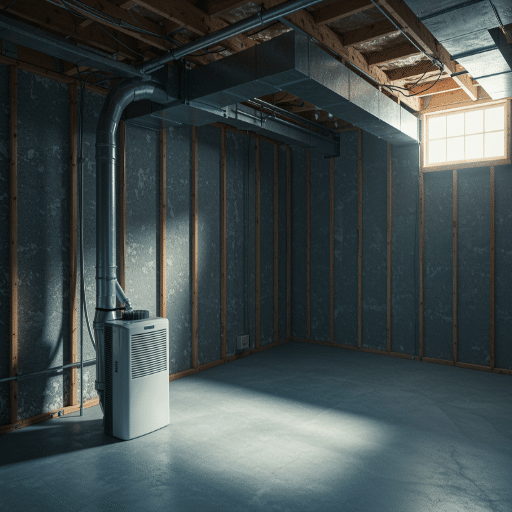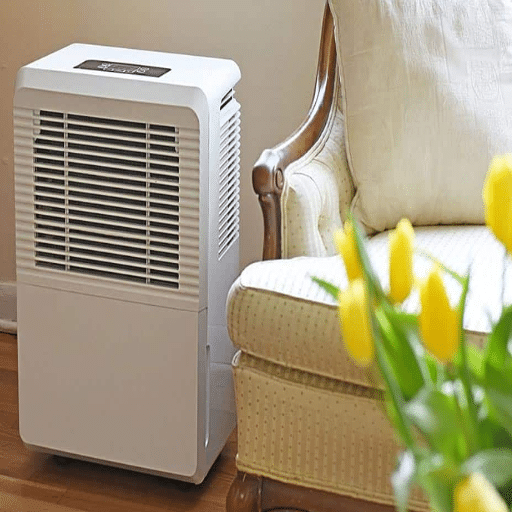Dehumidifiers are extremely important devices in any home, especially ones located in areas with excessive humidity. Dehumidifier placement is also critical and so this blog aims to help you gain the most result from your device in the least amount of time. We will look into the size of the room, how air flows throughout the room, and common areas in your house that are prone to obtaining an excess of humidity. This guide will serve you well whether you are trying to stop mold, increase the quality of air in your house, and take care of items that are prone to being damaged by moisture.
Where Should I Place a Dehumidifier in My Home?
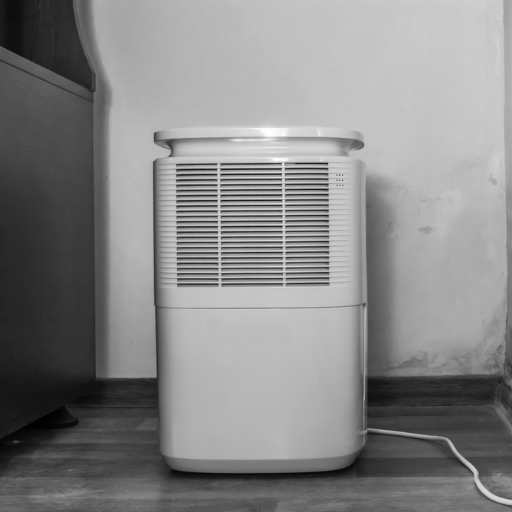
The ideal placement for your dehumidifier depends on the areas in your home most affected by excess moisture. Common trouble spots include basements, laundry rooms, bathrooms, and kitchens—spaces where humidity levels tend to be higher due to poor ventilation or water-related activities. Place the dehumidifier centrally in the room, ensuring it’s at least 6-12 inches away from walls or furniture to allow optimal airflow. For large, open spaces, consider positioning it near the source of moisture to maximize efficiency. Always set the dehumidifier on a flat, stable surface and, if possible, near a power outlet for convenience.
What is the Best Place to Put a Dehumidifier in the Bedroom?
For optimal moisture extraction, a dehumidifier should be positioned in the middle or in the most humid section of the bedroom. Make sure there is a clearance of at least 6-12 inches from walls, furniture, and curtains around the dehumidifier to enable proper airflow around the unit. Whenever possible, the appliance should be positioned near humid sources such as windows and cold surfaces where condensation occurs. To allow the appliance to work efficiently, the dehumidifier needs to be placed on a table instead of on a carpet, which would obstruct airflow. Additionally, keeping the bedroom doors closed while the dehumidifier is running will help the appliance control humidity effectively in the space.
Is the Basement a Good Location for a Dehumidifier?
The basement is a great location for a dehumidifier since basements are prone to excess moisture due to limited ventilation, lower temperatures, and their proximity to the ground. High humidity in a basement can result in mold accumulation, degradation of the infrastructure, and air quality issues. A dehumidifier helps control the moisture \ level in the air, thereby preventing these problems and improving the air quality. To achieve the greatest efficiency, dehumidifiers should be positioned in the middle of the room, away from walls and other hindrances, and with doors and windows closed to retain moisture. Proper maintenance such as filter cleaning and water tank emptying is also important to ensure peak performance.
How to Place Your Dehumidifier for Effective Airflow?
For optimal results, situate your dehumidifier in a central area of the room, preferably close to the moisture source, such as a damp wall or laundry space. At least 12-18 inches of clear space around the unit on all sides is ideal for proper circulation. Placing the dehumidifier near walls, furniture, or curtains is not recommended as it can block ventilation, vanquishing efficiency. To avoid additional humidity from entering the room you are dehumidifying, close all windows and doors. Furthermore, if there is an option for continuous drainage on the dehumidifier, position it next to the sink or drain for easy water removal. Make sure to check and clean the filter regularly and set the controls appropriate for the room size and moisture level to achieve optimal results.
How Do I Use a Dehumidifier for Maximum Efficiency?
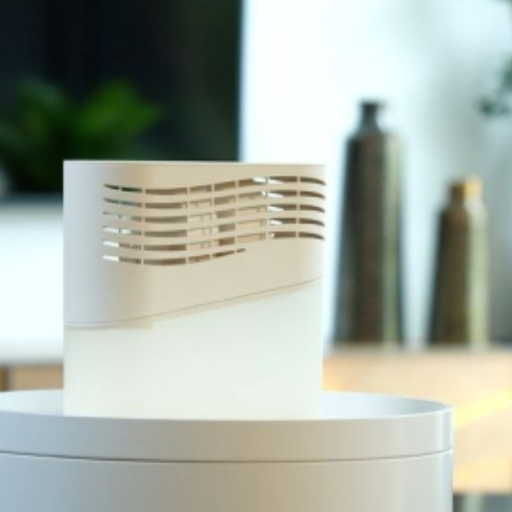
To use a dehumidifier for maximum efficiency, start by placing it in the area with the highest humidity, ideally in a centralized location. Ensure it is at least 6–12 inches away from walls or obstacles to allow proper airflow. Keep doors and windows closed in the room being dehumidified to prevent outside moisture from disrupting the process. Monitor the unit’s water tank and empty it as needed, or set up continuous drainage if available. Regularly clean the filter to maintain performance and check the settings to match the room size and humidity levels. For best results, run the dehumidifier when indoor humidity exceeds 50%.
How to Run a Dehumidifier to Remove Excess Moisture?
To effectively run a dehumidifier, begin by placing the unit in the most humid area of the space, ensuring it is positioned centrally and away from walls or furniture to allow proper air circulation. Close all doors and windows to prevent external humidity from affecting the results. Adjust the humidity settings based on your environment—ideally, aim to maintain indoor humidity levels between 30-50%. Empty the water tank regularly or use a continuous drainage option if available to avoid interruptions. Clean or replace the air filter periodically to ensure optimal performance and energy efficiency. For maximum effectiveness, run the dehumidifier during periods of high humidity, such as after heavy rains or in damp seasons.
Guidelines for Using Your Dehumidifier in High Humidity Areas
One way to control high humidities is by using a dehumidifier and these are some tips for effective performance:
Choose the Right Capacity: Make sure to find a dehumidifier that matches the capacity and level or humidity of the room. Units with larger capacities are recommended for areas with high moisture or lack of ventilation.
In the case of placement of the dehumidifier, it should be located at a central unobstructed point to allow proper circulation. It should also be 6-12 inches away from furniture and walls for proper air circulation.
To achieve comfort, keep the humidity levels to a 30% to 50% relative humidity range. A lot of dehumidifiers come with built-in humidistats which makes setting the unit easier.
Limit the airflow from the outside by keeping windows and doors closed to prevent any outside humidity from negating the units dehumidification work.
Routine maintenance is essential. It is best to change the air filters every couple of weeks, clean the water tanks regularly, or attach a hose to the drain for constant drainage, and keep the coils clean from dust and dirt.
Check for High Levels of Moisture: Monitor humidity levels with a hygrometer from time to time, primarily after heavy downpours or in persistently moist regions. If the area still seems to be humid, make the changes needed.
With these measures, you can mitigate humidity-related issues, shield your house from mold and mildew growth, and enhance air quality.
What are the Benefits of Placing a Dehumidifier in the Bathroom?
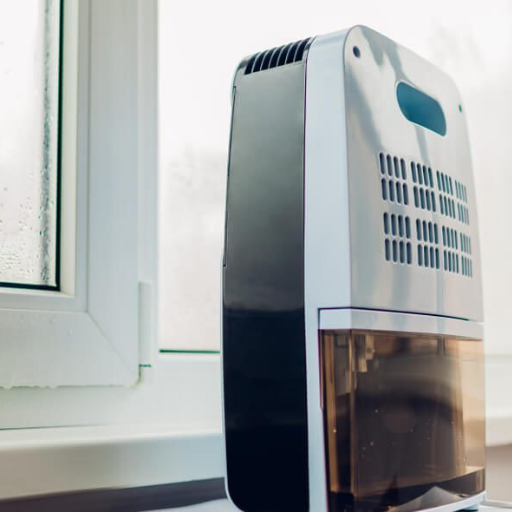
Reduces Mold and Mildew Growth: Showers and baths tend to leave restrooms damp and are an excellent breeding grounds for mold and mildew. Dehumidifiers reduce moisture levels.
Enhances Quality of Air: Reducing humidity impacts musty smells and allergens that may be present in the bathroom, making the air fresher and healthier.
Prevents Damage to Bathroom Surfaces: Walls, paint, grout, and fixtures may suffer damage over time due to excessive dampness. Dehumidifiers aid in reducing the harmful effects of humidity.
Aids in Promotion of Faster Drying: Items like bath mats and towels dry faster in a bathroom with controlled humidity, minimizing the chances of attaining a musty smell.
Improve Comfort: Lower humidity in the bathroom increases comfort after a warm shower or bath, getting rid of steam and improving usability.
How Does a Dehumidifier Help with Mould and Mildew?
A dehumidifier plays a crucial role in combating mold and mildew by efficiently reducing excess moisture in the air, which these fungi need to grow and thrive. By maintaining indoor humidity levels below 50%, a dehumidifier creates an environment that inhibits the growth of mold and mildew on walls, ceilings, and other surfaces. It not only helps to prevent the appearance of new fungal growth but also slows down the spread of existing mold, minimizing health risks associated with airborne spores. Additionally, controlling humidity with a dehumidifier protects porous materials like wood, fabric, and drywall, which are particularly susceptible to mold damage. This proactive approach ensures cleaner air quality and protects your home from costly repairs caused by prolonged mold exposure.
Can a Dehumidifier Reduce Condensation in Bathrooms?
Yes, a dehumidifier can effectively reduce condensation in bathrooms by lowering the overall humidity levels in the air. Excess moisture often accumulates in bathrooms due to hot showers or baths, leading to condensation on mirrors, windows, and walls. A dehumidifier works by extracting moisture from the air, preventing water droplets from forming on surfaces. This not only helps to mitigate condensation but also reduces the chances of mold and mildew growth, which thrive in damp environments. For best results, place the dehumidifier in a well-ventilated spot in the bathroom and use it alongside proper ventilation, such as an exhaust fan, to manage humidity efficiently.
How Does Humidity Affect the Positioning of a Dehumidifier?
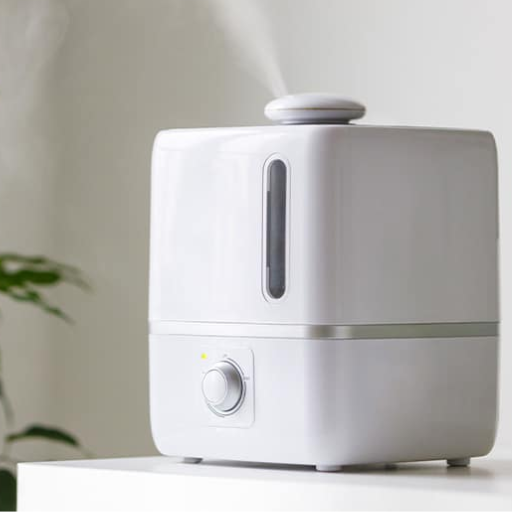
The level of humidity in a room plays a crucial role in determining where to place a dehumidifier for optimal performance. Areas with the highest humidity, such as near showers, bathtubs, or damp corners, are ideal spots to position the device. This ensures that the dehumidifier directly targets the source of moisture. Additionally, placing it in an open, unobstructed space allows for better air circulation, enabling the dehumidifier to work efficiently in removing excess moisture from the air.
Why You Need to Consider Humidity Levels Before Placement
Understanding and assessing the humidity levels in your space is crucial to determine the optimal placement of your dehumidifier. High humidity areas, such as basements, bathrooms, or laundry rooms, often benefit most from dehumidifiers since these spaces are more prone to dampness and mold development. It’s essential to measure the relative humidity in a room using a hygrometer, which can help identify whether the humidity exceeds the recommended range of 30-50%. Proper placement ensures that the dehumidifier operates efficiently, providing maximum moisture control, preventing structural damage, and improving air quality in your home.
What Role Does Relative Humidity Play in Dehumidifier Use?
Relative humidity (RH) is a crucial factor in determining the effectiveness and necessity of a dehumidifier. RH measures the amount of moisture in the air relative to the maximum amount it can hold at a given temperature. High RH levels, typically above 60%, can lead to problems such as mold growth, increased allergens, and damage to furniture and electronics. Dehumidifiers work by lowering RH to a more comfortable and safe range, ideally between 30% and 50%, depending on preferences and environmental conditions. By monitoring RH with a hygrometer, you can identify when and where a dehumidifier is needed, ensuring it operates efficiently to create a healthier and more comfortable indoor environment.
Are There Tips for Placing a Dehumidifier Away from Walls and Furniture?
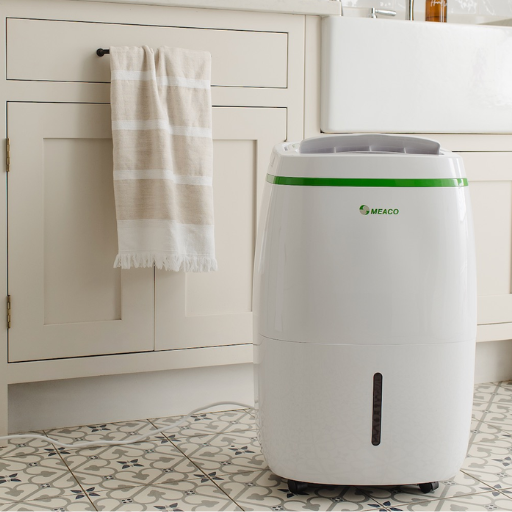
Yes, to optimize efficiency, place your dehumidifier at least 6-12 inches away from walls and furniture. This ensures proper airflow to the intake and exhaust vents, allowing the device to work effectively. Avoid positioning it near dust-prone areas, and place it in a central, open spot within the room for maximum coverage. Regularly check for obstructions and clean the unit to maintain its performance.
Why Should You Keep Your Dehumidifier Away from Walls?
Keeping my dehumidifier away from walls is crucial because it ensures proper airflow, which is essential for the device to function efficiently. When placed too close to walls or furniture, the intake and exhaust vents can become obstructed, reducing its ability to draw in moist air and release dry air effectively. This could lead to less efficient performance, increased energy usage, and potentially shorten the lifespan of the unit. Positioning it in an open, central area allows for optimal air circulation and maximum dehumidification throughout the room.
What are the Risks of Placing a Dehumidifier Near Furniture?
Putting the dehumidifier near the furniture could be extremely dangerous. First, the unit’s vents may be blocked which can lead to carpets and air not flowing freely. The results are inefficient moisture removal and insufficient breeze versus energy spent. Second, a lot of upholstered or wooden furniture pieces will incur damage like cracking or warping because of the dehumidifier’s excessive output of air. Lastly, the chances of furniture getting exposed to potential leaks or spills increases with improper positioning, which can be very damaging. To avoid all of these issues, you should align the dehumidifier several feet away from the furniture.
How Can a Dehumidifier Help with Drying Clothes?
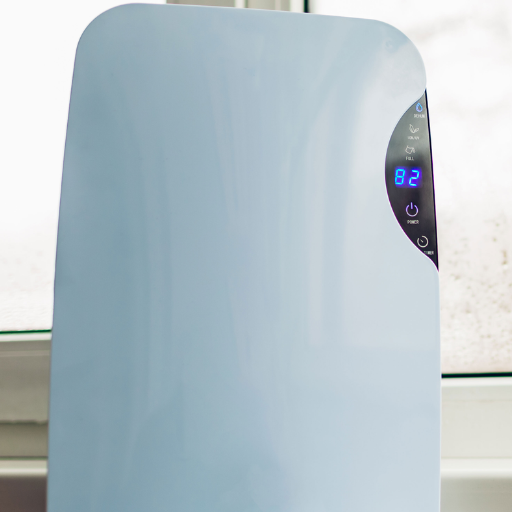
Using a dehumidifier to dry clothes can be an efficient and effective method, especially in indoor settings. By reducing the moisture level in the air, a dehumidifier accelerates the evaporation process, allowing wet clothes to dry more quickly. This approach is particularly useful in damp or cold environments where natural drying is slow. Additionally, running a dehumidifier while drying clothes indoors can help prevent mold growth and reduce musty odors, creating a more comfortable living environment.
Can You Use a Dehumidifier to Dry Laundry Indoors?
Indeed, employing a dehumidifier is an effective way to dry laundry indoors. Moist air can be problematic, for which a dehumidifier is the perfect solution. Deworming a room in the vicinity of your laundry aids in evaporating water from clothing. This device also captures water vapor, which results in lowering the humidity further, which leads to a dryer room and fluffing for clothes. Most of the time, this technique is used in areas with poor air circulation or during the winter months when drying clothes outside is not an option. Moreover, using a dehumidifier while the clothes are drying indoors helps control the growth of mold and mildew, reduces dank, musty smells, and creates a safe living environment.
What is the Best Place to Put a Dehumidifier for Drying Clothes?
When deciding where to place a dehumidifier for drying clothes, positioning is key to maximize its efficiency. Ideally, the dehumidifier should be placed in the same room where the clothes are drying, close to the laundry but not directly underneath, as this allows for optimal air circulation. Choose a central location within the room, ensuring there is at least a few feet of clearance around the unit for unrestricted airflow. If possible, keep the room closed off from other spaces to concentrate the dehumidifier’s effects. Additionally, placing it on a flat, stable surface and away from walls or bulky furniture helps prevent blockages and ensures even air dehumidification.
References
Frequently Asked Questions (FAQ)
Q: Where is the best place to put your dehumidifier for optimal results?
A: The best place to put your dehumidifier is in a central location in the room or area where you experience the most excess humidity. This helps ensure that the dehumidifier can remove moisture effectively from the air throughout the house.
Q: How do I determine the size dehumidifier I need?
A: When buying a dehumidifier, you should consider the square footage of the area and the level of humidity you need to address. A larger space or higher humidity levels will require a larger capacity unit to effectively control humidity levels.
Q: Can a dehumidifier help with condensation on windows?
A: Yes, a dehumidifier can help prevent condensation on windows by reducing the relative humidity level in your home, which minimizes moisture build-up on glass surfaces.
Q: Should I put my dehumidifier in the utility room?
A: You can place your dehumidifier in the utility room if it’s a damp area that experiences humid air. However, always consider the room’s ventilation and whether the dehumidifier can circulate dry air throughout the house.
Q: Is it necessary to empty the reservoir frequently?
A: Yes, you need to empty the reservoir regularly, especially if your dehumidifier is not equipped with a continuous drain option. This ensures the unit operates efficiently and prevents overflow.
Q: How can a dehumidifier help with dust mites?
A: By maintaining a lower relative humidity level, a dehumidifier can create an environment that is less hospitable to dust mites, which thrive in humid conditions.
Q: Can I use a dehumidifier throughout the house?
A: Yes, you can move a portable dehumidifier to different rooms to address moisture problems in various areas, or opt for a whole house dehumidifier for comprehensive coverage.
Q: Should I avoid placing my dehumidifier near warm air sources?
A: Yes, avoid placing your dehumidifier near warm air sources, as they can affect its efficiency in cooling and condensing humid air to remove moisture.
Q: What are some signs that I need a dehumidifier?
A: Signs that you might need a dehumidifier include persistent damp air, a musty smell, mold growth, and condensation on windows. These indicate excess humidity that needs to be controlled.
Q: Are there useful links to learn more about finding the best dehumidifier?
A: Yes, searching online for reviews and guides can provide useful links to help you in finding the best dehumidifier suited to your needs and space.


